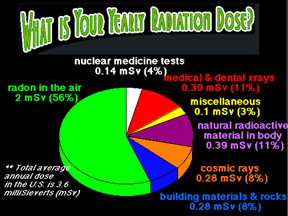On average, people in the U.S.A. are exposed to about 3.6 milliSieverts of radiation each year.
Click on image for full size
Windows to the Universe original artwork using data from the National Council on Radiation Protection and Measurements.
Radiation
The text for this level hasn't been written yet. Please check the "Intermediate" or "Advanced" level of this page (click on the bar near the top of this page).
You might also be interested in:
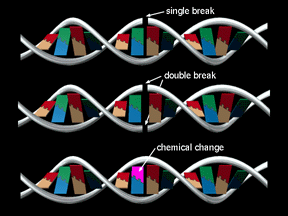
Whether or not a cell can repair itself after being damaged by radiation depends on the type of damage to the cell's DNA. Type of Damage Prospects for DNA Repair Single strand break in the DNA Can usually
...more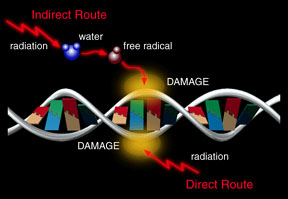
High frequency radiation or fast moving particles plow into a living cell with enough energy to knock electrons free from molecules that make up the cell. These molecules with missing electrons are called
...more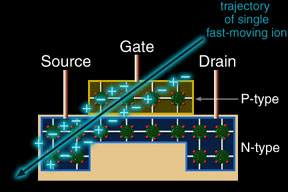
Radiation can damage electronic circuits. Radiation can also cause electronics to malfunction. Radiation can damage the materials used in electronics over time. That can make the electronics wear out sooner.
...more
Radiation can be harmful to living creatures. Radiation can harm living things directly by damaging their cells. The cells might stop functioning, or they might be unable to reproduce. Radiation can also
...more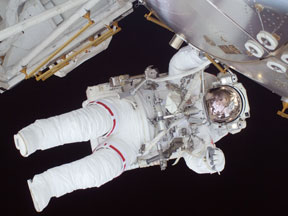
Astronauts are exposed to many different types of dangerous radiation in space. Space agencies, like NASA, must carefully monitor the radiation exposure of astronauts to make sure they remain safe and
...more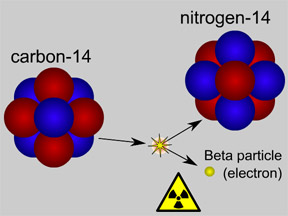
Some materials are radioactive. They give off radiation. When an atom of a radioactive substance gives off radiation, it becomes a new type of atom. This change is called radioactive decay. There are two
...more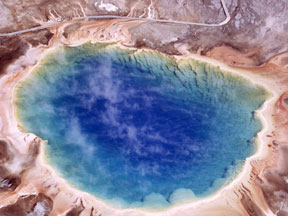
This page describes environments that are filled with acids, are blasted with radiation, are under high pressure, or are tough places for most living things in other ways. It is easy for living creatures
...more


